Audio Version: Click Player to Stream or Right Click on Link to Download. For full Audio Library of Past Messages, Click Here
Download MP3
Back in the day when I studied Organizational Development, we learned a model of development for teams called The Tuckman Model. And its something I’ve come back to again and again in the decades since in my facilitation and coaching work … it’s a model that has really stood the test of time, not only in my practice but for process consultants across the globe.
In a nutshell, it’s a model that explains and normalizes the natural stages that a coach-and-client, group, team, organization, community or other entity goes through in terms of getting to high performance. There is a polite, forming stage, a challenging storming stage, a stabilizing norming stage (where things pop into a higher level of order) and the juicy performing stage where advancement leaps occur … where the rewards of the early stages are reaped.
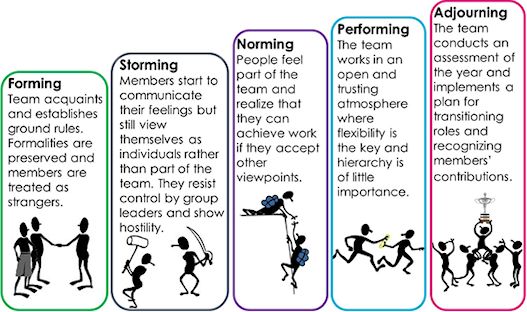
I am of the firm belief that this model also works for individuals and for communities. So I’m choosing to share it here in the e-Zine for the benefit of my private coaching clients and those I work with in our SHIFT-IT Online Group and our THRIVE programs (this article is modified from a THRIVE forum post of last week).
Forming:
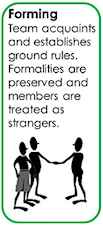 When any group or team is formed (including a coach-and-client partnership and online coaching groups), members can expect to go through some predictable and normal stages in acclimatizing to each other and their shared tasks. This first stage is a polite, beginning phase where the parties meet and get acquainted and get a sense of the articulated (or unarticulated) ground rules of how they will operate. Formalities are preserved and in short, everyone is on good behavior, keeping apprehensions, reservations or concerns (if there are any) to her or himself.
When any group or team is formed (including a coach-and-client partnership and online coaching groups), members can expect to go through some predictable and normal stages in acclimatizing to each other and their shared tasks. This first stage is a polite, beginning phase where the parties meet and get acquainted and get a sense of the articulated (or unarticulated) ground rules of how they will operate. Formalities are preserved and in short, everyone is on good behavior, keeping apprehensions, reservations or concerns (if there are any) to her or himself.
For new coaching clients or participants in coaching groups … this first stage is where they may not be sure about how things will go with the coach or the coaching group or what the experience will be. They are willing to jump in and go for it but its an unknown stage — where clients take a leap of faith and hope for the best. During this stage its normal to be confused about how things fully work, how to use various technologies or communication routes, to be more shy or quiet than usual, and to be unsure or not totally confident about the other players involved. Its all brand new and untested.
Storming:
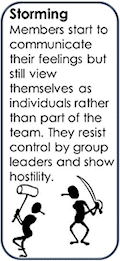 After the forming stage its natural to morph into the storming phase. And while uncomfortable (especially with all this amped up energy we are being bathed in during this latter part of 2012) this stage is also perfectly normal and to be expected from a process point of view.
After the forming stage its natural to morph into the storming phase. And while uncomfortable (especially with all this amped up energy we are being bathed in during this latter part of 2012) this stage is also perfectly normal and to be expected from a process point of view.
This is where we find ourselves agitated, triggered or activated about things going on in the coaching alliance or coaching group. The niceties of the first stage have fallen away and individualistic feelings are now felt and expressed (either passively or directly). Members are still primarily functioning as separate individuals … the unity or synergy of later stages has yet to appear. In fact, the individuals involved must successfully navigate the important storming phase in order to graduate to greater coherence. This storming phase can be quick (a matter of minutes) or long (days, weeks, months or years — if the members have to stay in the group for employment or other reasons … resulting in toxic environments that process professionals are often brought into to help resolve if possible).
There is such an opportunity inherent in the storming stage if members can communicate their feelings and work through them — that leads to greater understanding and empathy and operating at a higher level … move into ‘we’ rather than just a set of separate ‘I’s.
Norming:
 Once (if) partners and groups make it through the storming stage then stability starts to happen in the more peaceful Norming stage. Things start to make sense, ahhas, breakthroughs and paradigm shifts occur. The feelings that are up for each individual come into visibility and the sharper edges get polished down through communication and aligned actions. With less activation and more general optimism and team spirit the tone of interactions take on a pleasant and enjoyable feel – of one for all and all for one. Norms and successful systems and ways of operating are established and members work successfully together.
Once (if) partners and groups make it through the storming stage then stability starts to happen in the more peaceful Norming stage. Things start to make sense, ahhas, breakthroughs and paradigm shifts occur. The feelings that are up for each individual come into visibility and the sharper edges get polished down through communication and aligned actions. With less activation and more general optimism and team spirit the tone of interactions take on a pleasant and enjoyable feel – of one for all and all for one. Norms and successful systems and ways of operating are established and members work successfully together.
High Performance:
 With continued focus on our higher intentions and continuing to ‘work out the bugs’ as they emerge, we reach the holy grail … High Performance … or in THEO lingo “Emotional Mastery”. When we stick with the coach, group, team, organization or community long enough to work it out naturally on our own (or through the aid of a skilled process worker) the norming stage gets institutionalized and then the Flow or Synchronicity that author Mihaly Csikszentmihalyi speaks of kicks in.
With continued focus on our higher intentions and continuing to ‘work out the bugs’ as they emerge, we reach the holy grail … High Performance … or in THEO lingo “Emotional Mastery”. When we stick with the coach, group, team, organization or community long enough to work it out naturally on our own (or through the aid of a skilled process worker) the norming stage gets institutionalized and then the Flow or Synchronicity that author Mihaly Csikszentmihalyi speaks of kicks in.
High Performance is a joy to be in. Its that powerful alliance between a coach and client that is so beneficial and enjoyable for both … or in the case of a coaching group, team or organization a thrill for all involved. Its those communities or companies that stand the test of time … where members stay for long stretches of time not because they have to but because they want to. Or, if they do leave (adjourn, because its time and things have come to a natural conclusion) its done with a happy heart and with good feelings … with fond memories being created and cherished. A touchstone or measurement for future alliances.
Adjourning:
 Most partnerships, coaching groups, teams, groups, organizations and communities come to a natural end at some point (either through changes in conditions or changes in the needs of individuals). As such, there is a wonderful opportunity to close things out in a conscious and honoring way. To be thankful and appreciative of the experience and to wish all members well on their next steps and diverging paths.
Most partnerships, coaching groups, teams, groups, organizations and communities come to a natural end at some point (either through changes in conditions or changes in the needs of individuals). As such, there is a wonderful opportunity to close things out in a conscious and honoring way. To be thankful and appreciative of the experience and to wish all members well on their next steps and diverging paths.
It always a sadly sweet experience for me to bid farewell to a high performing client or group. SHIFT-IT and Interactive-Visuals work is powerful stuff (as is the collaborative work that I do with The THEO Group) and its an honor to be a stepping stone on people’s paths and do good work together. A good coach or teacher knows that endings are part of the deal — successful process professionals want to empower their clients as quickly as possible not breed dependency. Client will move onto new experiences (either with you or with somewhere else) and Tuckman’s cycle plays out again, to whatever level it needs to, in the new container. ;
Not So Neat and Orderly:
A final thing to emphasize before I conclude is that these stages don’t happen in a neat and orderly fashion … the map is not the territory. And there is no guarantee that High Performance will indeed be reached (however the good news is, with consistently applied emotional mastery and aligned actions, the odds get highly stacked in our favour!).
Where the first graphic is handy for explaining the overall model and its stages. The graphic below shows how the stages actually happen in a much more organic and haphazard way.
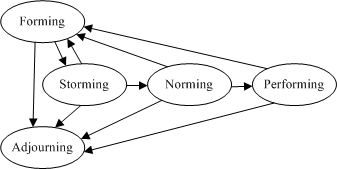
Our process with coaches, groups, teams, organizations and communities will most likely not process in a neat orderly fashion. In fact, Tuckman’s model actually shows us that it is naïve to think otherwise. At times, we may feel like we have moved backwards or are going in the wrong direction. Our stages will jump all over the place and there is the real risk of being taken out by storming or reaching a plateau with norming and going no further. That is just the nature of development work — and what makes it so DARN exciting too!
I wish you all the best on your journey of unfoldment in whatever alliances you are a part of and thank you for letting me share my ponderings (and making the link between coaching and spirituality work with a well worn process model from the consulting world). I hope it will give you support in understanding your own unique journey with the people and groups you are in connection with.
©2012 Christina L. Merkley
WANT TO USE THIS ARTICLE IN YOUR E-ZINE OR WEB SITE?
You can, as long as you include this blurb and a functional link to my site:
Author’s Bio: Christina Merkley, “The SHIFT-IT Coach” and creator of the SHIFT-IT System®, is a Visioning and Strategic Planning Expert specializing in Visual Thinking and Energy Alignment techniques. Based in charming Victoria, British Columbia, Canada, she works deeply with individuals, partners and conscious businesses to define and manifest what they truly want. And, trains other helping professionals in her innovative ways of working. For more information visit: www.shift-it-coach.com and www.visualcoaches.com
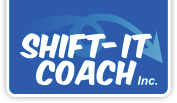
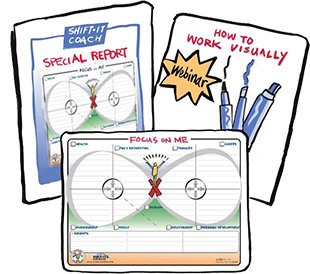
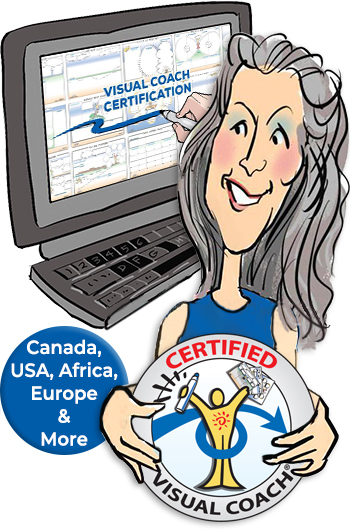
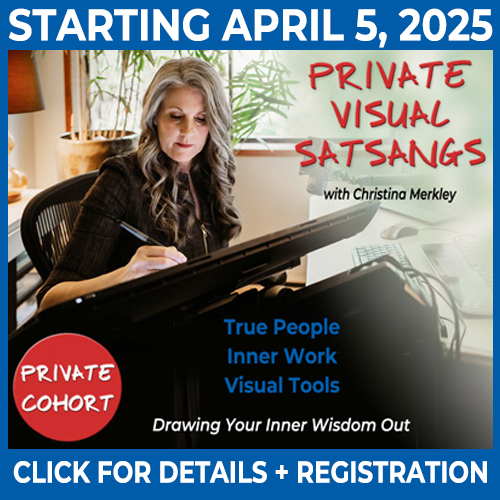
Hello Christina, I am seeking your permission to include the information on The Tuckman Model that you posted on your website. I would like to include it in a book I am writing. I will include your information and web page as reference. May I please have permission to use the information. I will provide you with a free copy of the book when it is published.
Hi Terri.
I’m Pat Harris, Assistant here at SHIFT-IT Coach, Inc. Thanks for your interest in this article. Yes, you are welcome to use Christina’s article, just as long as it remains as is and you include her bio blurb at the end. If you don’t want to use her article in its entirety, then we suggest you source directly with Tuckman.
All the best with your endeavors!